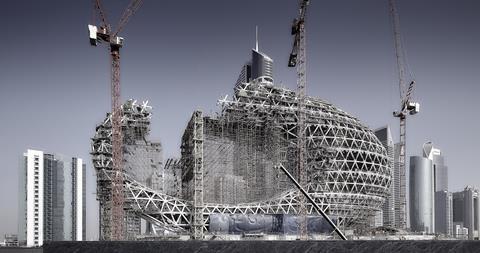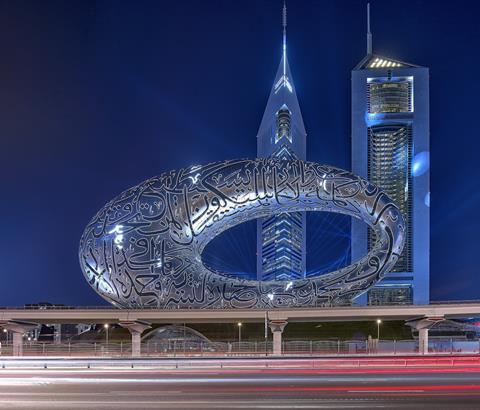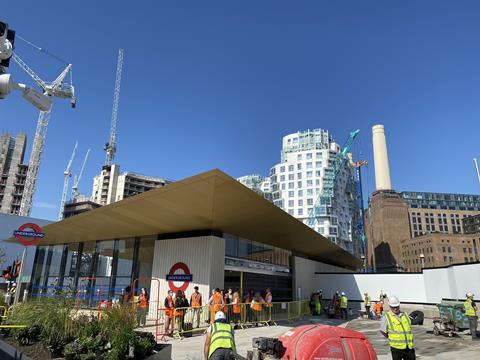While established convention had BIM standing for building information modelling, increasingly the construction industry thinks of it as building information management. Michael Bartyzel, global BIM lead at Buro Happold, explains more about this largely untapped potential, and what it could mean for the future

BIM was originally conceived as a building information management model, an annotated digital rendering of a design team’s vision. More recently, it has evolved to become an information receptacle for a building.
This digital model has become an invaluable asset for the design and building process, from improving communication and minimising risk to reducing costs and increasing productivity. But what can it offer beyond this?

Recent heatwaves and droughts affecting cities across the globe have highlighted the challenges created by climate change. More than ever, it is important to consider the future of our buildings and how they might operate as efficiently and sustainably as possible. What is often overlooked is the role BIM can play in this.
Once a building is in operation, a digital model is an effective means of achieving optimal energy efficiency – BIM can be used as a “black box”, a constantly updating digital reserve for every tiny piece of data relating to the building as it continues to evolve and change.
This begins during the design and building process. For example, as part of Buro Happold’s work on the Museum of the Future in Dubai, we created a 3D energy model in which all 12 disciplines could interact in real time.
This meant we were able to make more than 50 sustainable design decisions, resulting in a range of tangible benefits. These included a 45% reduction in water use and total energy savings of 25%.
Crucially, the benefits of modern BIM do not stop upon completion of the project. The digital model can be updated and improved as the building is used. In some instances, we have been asked to return after a project’s completion to help support on this.
One such case was Newcastle University’s Urban Sciences Building. Having created the 3D BIM model for this ultra-energy efficient building, we were invited back to assess and fine-tune its ongoing performance using the thousands of digital sensors already embedded across its structure.
Another major benefit is ensuring that high safety standards are maintained throughout a building’s lifetime. The Grenfell Tower fire in 2017 was a stark wake-up call, demonstrating just how important this is.
One of the recommendations of the Hackitt report that followed the tragedy was that there should be a golden thread of information that can be followed for every project. A BIM model and digital twin can offer precisely this.
The level of detail that a model can provide will also prove to be essential for any building’s sustainability journey. The embodied carbon of a building is not just about the carbon dioxide emissions from the construction process: it also takes into consideration those produced from conducting maintenance work, as well as during the demolition process.

A digital model offers an easily accessible insight into a building’s “genetics”. BIM modelling is therefore a useful tool as sustainability requirements cause the building industry to increasingly look to refurbish as opposed to build new.
The intelligence that BIM can offer on the different material components of a building can prove invaluable for future refurbishment work, as a means of assessing what can be preserved.
Some may rightly point out that, while this will prove favourable for new-builds, this does not solve the issue for the vast number of buildings currently in existence, constructed before the age of BIM and digital twins. It is never too late to create a digital model, however, and it is something we actively encourage given the benefits outlined above.
These can be created through survey work and laser scans to create an accurate replica. Buro Happold used BIM technology as part of our decade-long work on the Battersea power station regeneration project, working with the Battersea Power Station Development Company to overcome its many engineering challenges, including successfully integrating the structure of the new Underground station with the development above it.
To help both the station and development proceed in parallel without impacting on programme, cost or construction workspace, we collaborated closely with the Northern line extension construction team within an integrated digital BIM environment.

BIM is hugely beneficial within the design and construction process and will only get more useful as the software becomes ever more sophisticated. The potential for automation of designs and elimination of risk is exciting.
What is even more exciting is the value that BIM can add once a building is completed. It can track the sustainability “health” of the building, make efficiency improvements easier and inform regeneration or refurbishment.
This is where we are seeing BIM provide real solutions to the climate and sustainability challenges, both today and into the future.
Michael Bartyzel is global BIM lead at Buro Happold, the international integrated advisory, consulting, and engineering consultancy
























No comments yet